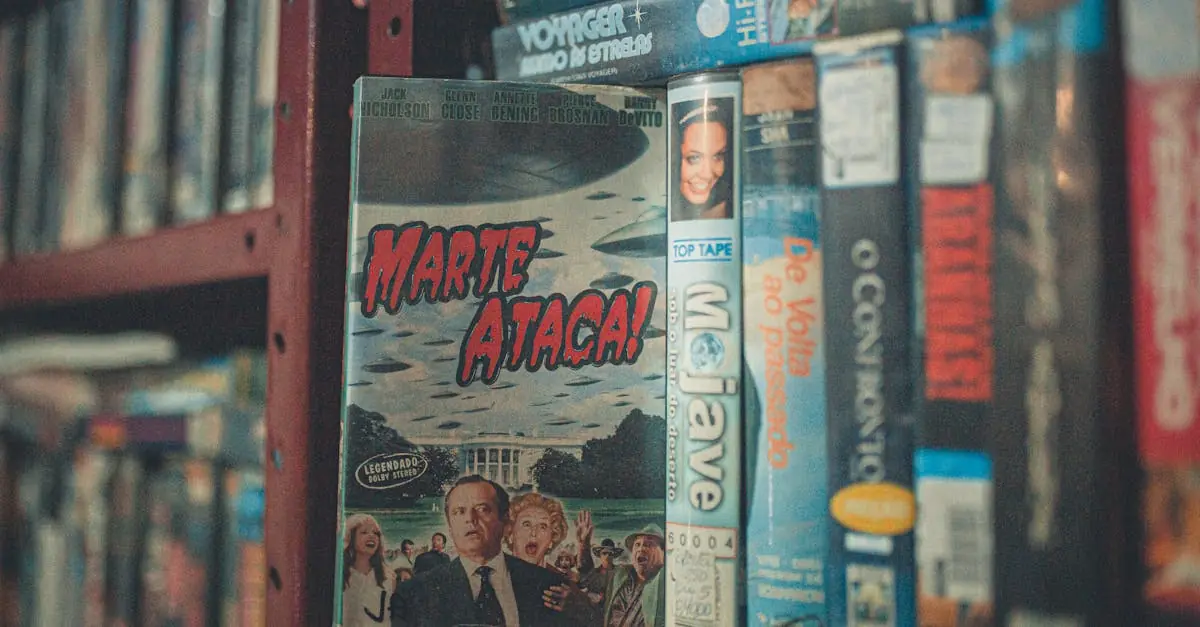Table of Contents
ToggleIn a world where every weekend brings a new cinematic spectacle, blockbuster breakdowns are the unsung heroes of film analysis. They dive deep into the glitzy chaos of Hollywood, revealing the hidden gems and colossal flops that often slip through the cracks. It’s like peeling back the layers of an onion—only this onion has explosions, plot twists, and a sprinkle of star power.
Ever wondered why that highly anticipated sequel left audiences scratching their heads? Or how a low-budget indie film stole the show? Buckle up as we explore the rollercoaster ride of blockbuster breakdowns, where laughter meets insight, and every critique is served with a side of wit. Get ready to discover the secrets behind your favorite flicks and the not-so-favorites that might just be better left in the dark.
Overview of Blockbuster Breakdowns
Blockbuster breakdowns play a crucial role in film analysis. These analyses reveal insights into the successes and failures of Hollywood productions. They examine cinematic elements such as special effects, character development, and narrative structure.
Such breakdowns highlight audience reactions. Understanding what resonates with audiences offers filmmakers valuable guidance. Dissecting major films helps identify patterns that lead to successful sequels or flops.
Through these evaluations, critics and fans can appreciate both acclaimed hits and underrated gems. They provide a platform for debate, encouraging discussions around plot twists and character arcs. Unique aspects of each film, including tone and pacing, often emerge as focal points during analysis.
Incredible explosions or unexpected turns captivate viewers. Audience reactions to these elements significantly influence box office performance. Analysts utilize data to uncover trends related to genre preferences and demographic responses.
Exploring indie films offers additional layers to the conversation. By comparing blockbusters to their smaller counterparts, analysts can contextualize successes. Many indie films, despite limited budgets, showcase innovative storytelling techniques that challenge mainstream narratives.
Overall, these breakdowns serve as the foundation for a deeper understanding of cinema. Analysts foster appreciation for artistry in filmmaking through meticulous evaluations. Engaging with this analysis allows audiences to connect with films on a more profound level.
Common Causes of Blockbuster Breakdowns
Blockbuster breakdowns often stem from several key issues. Identifying these can help audiences understand cinematic failures and successes more deeply.
Technical Failures
Technical failures lead to significant breakdowns in blockbusters. Poor special effects can detract from the viewer’s experience. Sound issues disrupt engagement and immersion. Issues with cinematography, such as inadequate lighting or shaky cameras, affect the film’s overall quality. When editing lacks precision, continuity becomes problematic, leading to confusion. These technical elements contribute directly to audience dissatisfaction and impact a film’s reception.
Poor Marketing Strategies
Poor marketing strategies result in missed opportunities. Failure to target the correct audience can lead to low ticket sales. Inadequate promotion fails to build excitement, preventing potential viewers from discovering the film. Misleading trailers can create unrealistic expectations, leading to disappointed fans. Additionally, a lack of social media engagement can diminish buzz. When marketing does not align with the film’s strengths, audiences may overlook it entirely, resulting in a critical financial setback.
Case Studies of Notable Blockbuster Breakdowns
Blockbuster breakdowns reveal crucial insights into why certain films succeed or fail. Here are two illustrative examples.
Example 1: The Movie That Flopped
“John Carter,” despite a production budget of $250 million, struggled at the box office. Released in 2012, the film aimed for epic science fiction status but garnered only $73 million in domestic earnings. Critics and audiences alike pointed to unclear marketing strategies and disconnect with the source material. The lack of recognizable stars, coupled with heavy CGI reliance, diminished viewer interest. Filmmakers learned that the disconnect between viewer expectations and execution often leads to significant box office losses.
Example 2: The Anticipated Release That Disappointed
“Batman v Superman: Dawn of Justice” generated immense hype in 2016. Boasting a star-studded cast and established superhero icons, expectations soared. Nevertheless, the film earned mixed reviews and only $873 million worldwide against a $250 million budget. Critics noted issues with pacing and narrative coherence, which alienated viewers hoping for a seamless culmination of beloved characters. The marketing strategy failed to resonate too, as it lacked clarity about the storyline. This case underscores the importance of meeting audience expectations while maintaining a coherent narrative.
Lessons Learned from Blockbuster Breakdowns
Examining blockbuster breakdowns reveals valuable lessons for filmmakers and audiences alike. Understanding audience reactions proves critical in shaping future projects. Identifying common pitfalls, such as poor marketing strategies, serves as a guide for developing effective promotional campaigns. Audience disconnect frequently arises from unclear trailers, making targeted marketing essential.
Recognizing the impact of technical failures highlights the importance of quality in production. Poor special effects or inadequate sound can detract from the overall experience. Narrative coherence contributes significantly to audience satisfaction, which underscores the importance of clear storytelling.
Case studies provide concrete examples for analysis. “John Carter” struggles illustrate how mismatched expectations and unclear marketing led to its financial failure. “Batman v Superman: Dawn of Justice” emphasizes the need for pacing and engaging narrative, as its mixed reviews show a disconnect between hype and execution.
Innovative storytelling in indie films showcases how creativity can thrive without large budgets. Recognizing these unique approaches may inspire mainstream filmmakers to experiment with narratives. Prioritizing character development often resonates more deeply with viewers than mere spectacle, underscoring the emotional connections that drive audience engagement.
Overall, these breakdowns not only offer insights into the mechanics of film production but also invite audiences to appreciate the artistry involved. Lessons extracted from both triumphs and failures help shape the future of cinema, fostering a deeper understanding and connection with the films that captivate viewers.
Blockbuster breakdowns serve as a vital tool for understanding the intricacies of film production. They reveal not just what went wrong but also what can be learned for future projects. By analyzing audience reactions and technical elements filmmakers can refine their craft and enhance viewer engagement.
These breakdowns foster a deeper appreciation for the artistry behind both blockbuster hits and indie gems. They highlight the importance of coherent storytelling and effective marketing strategies. Ultimately, the insights gained from these analyses can shape the future of cinema, ensuring that filmmakers continue to connect with audiences in meaningful ways.





